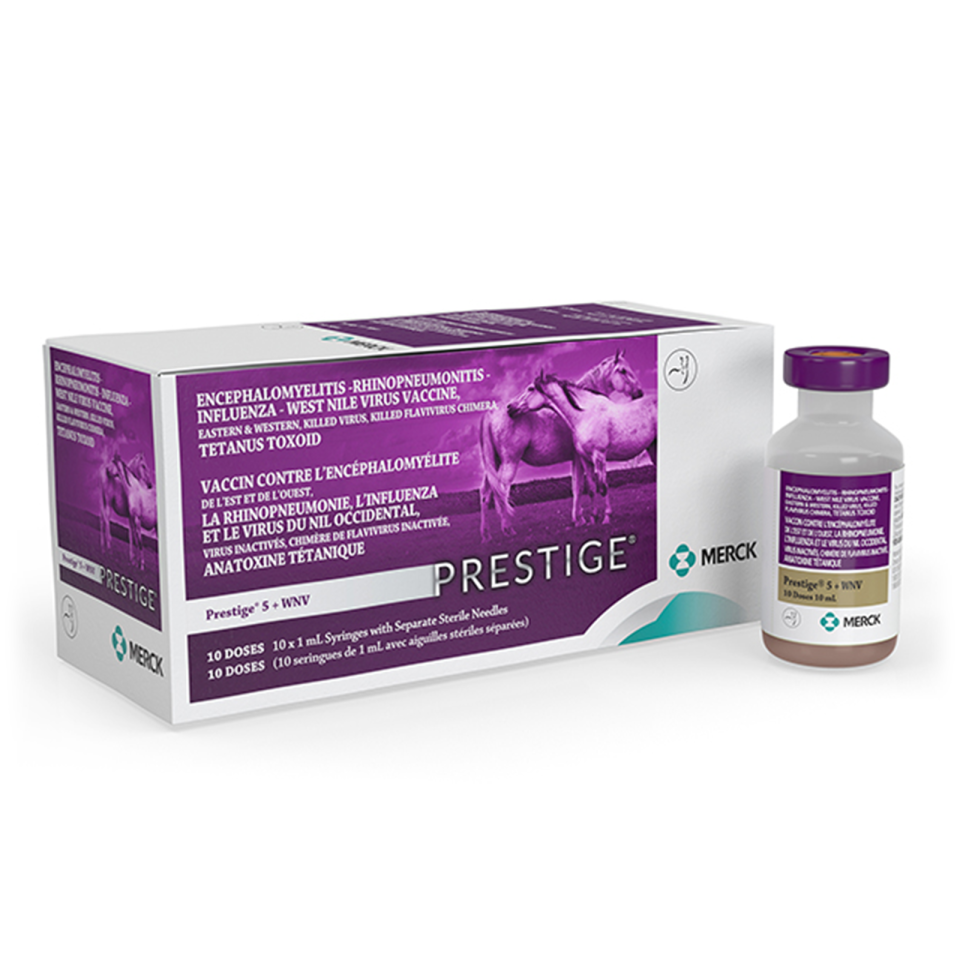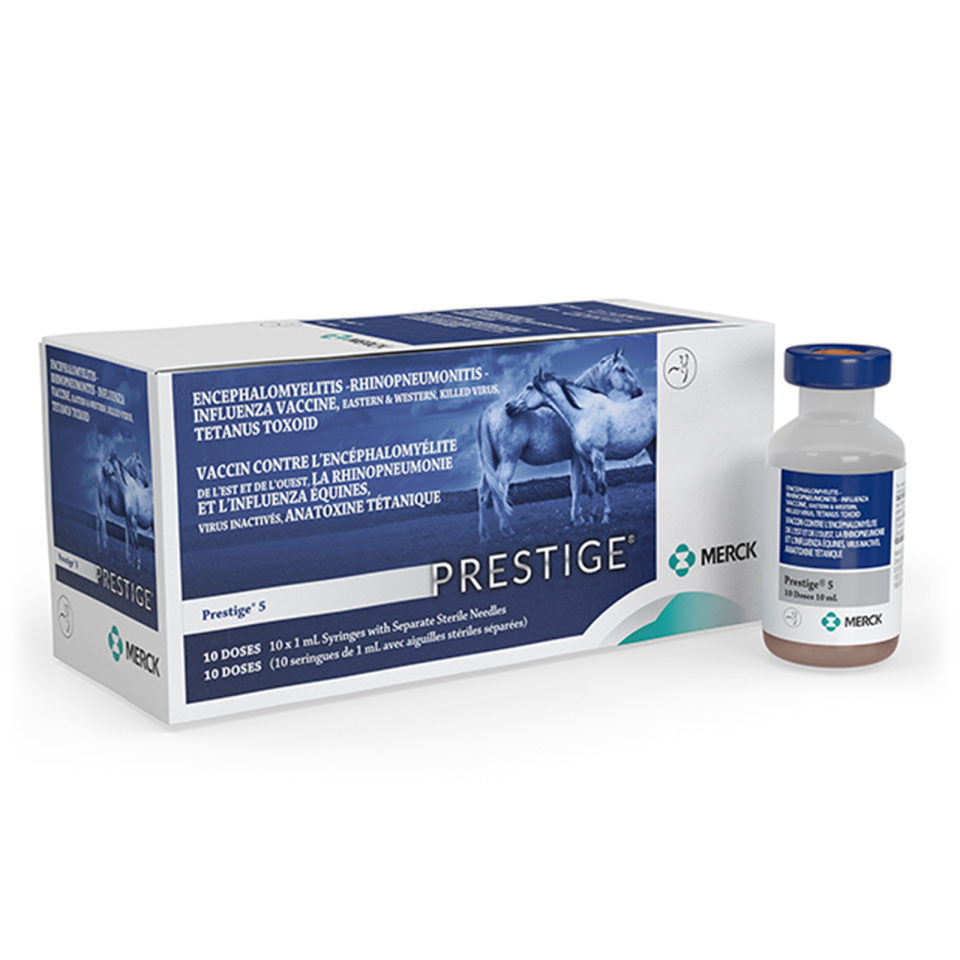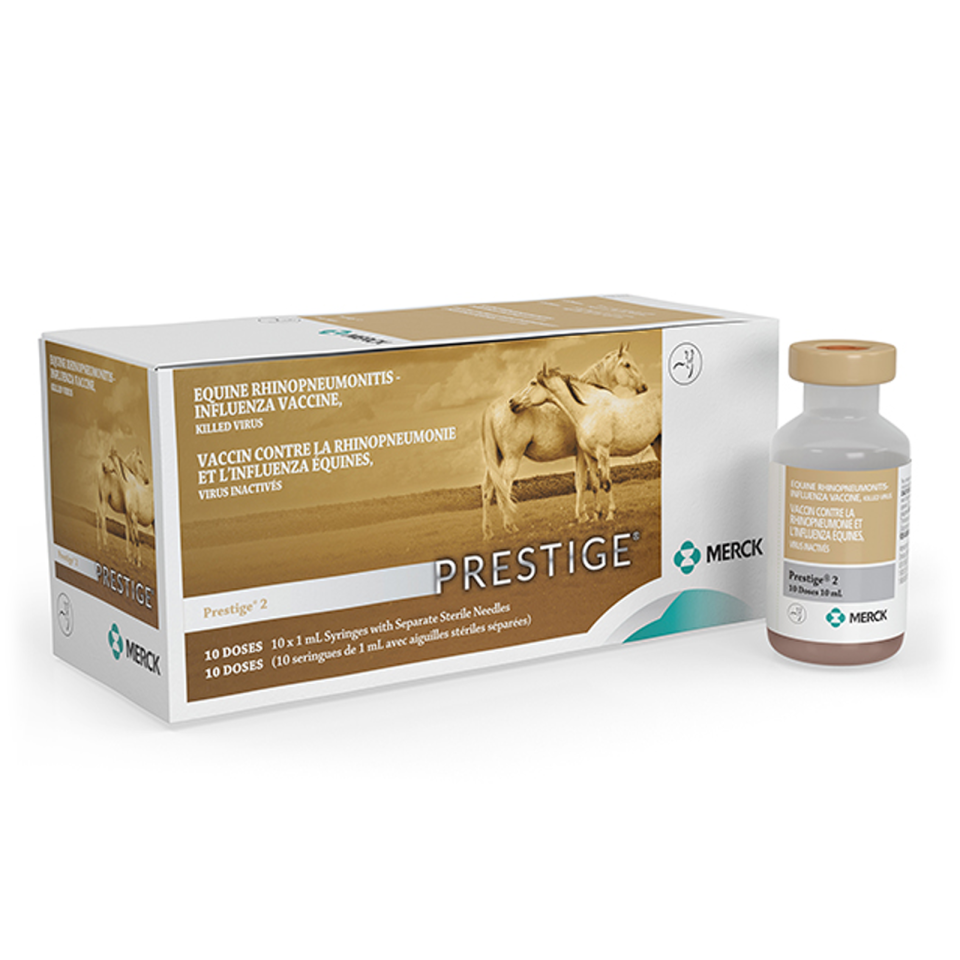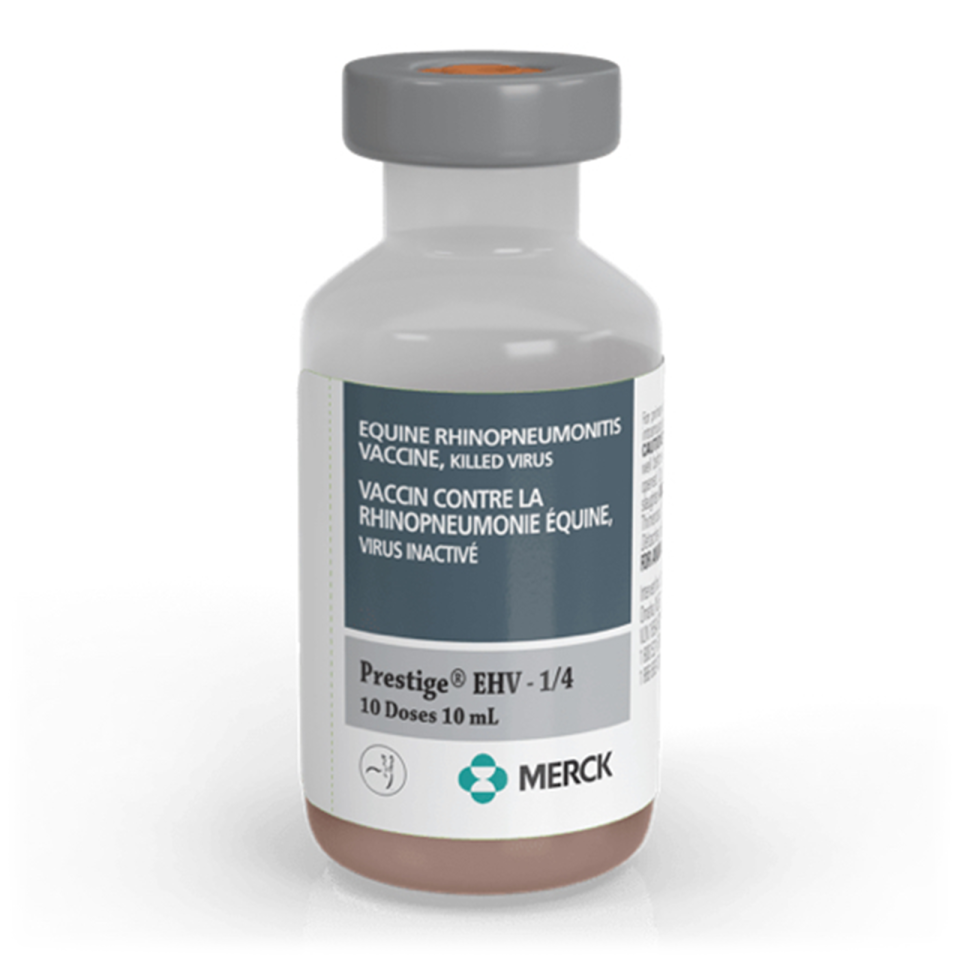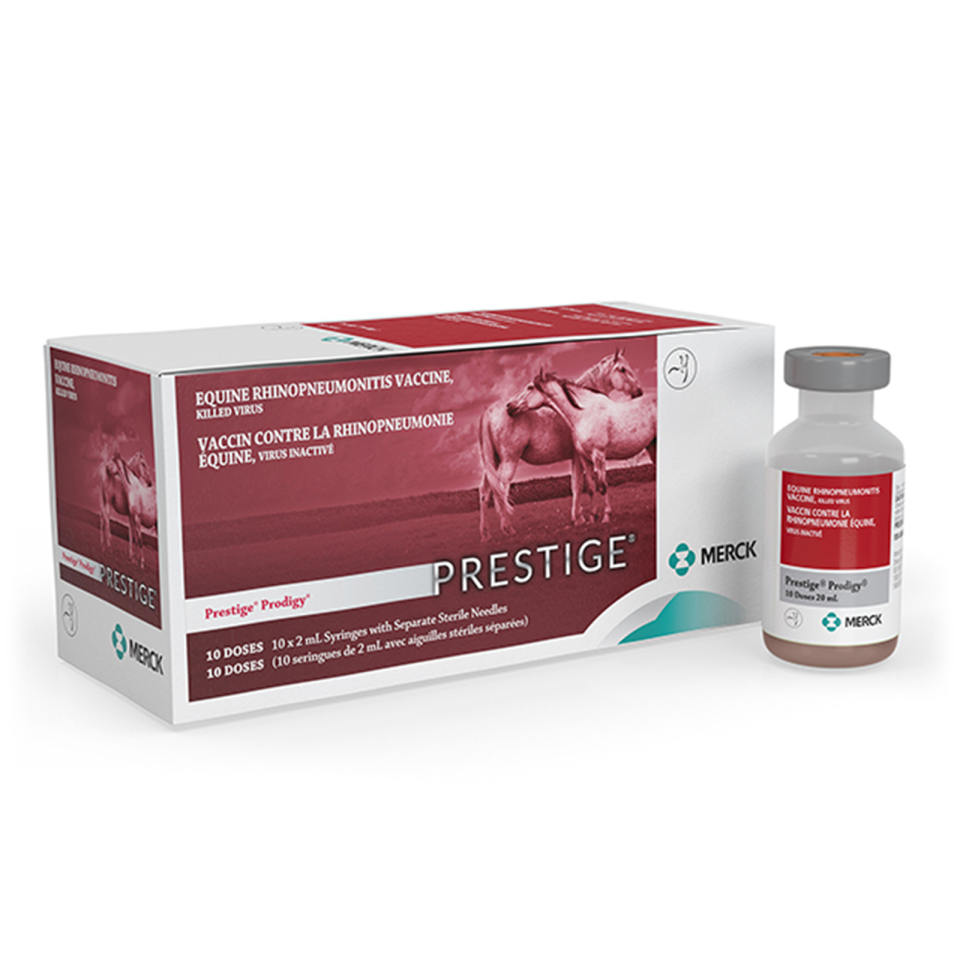
Equine Herpesvirus
(EHV, or rhinopneumonitis)
Disease Overview
Equine herpesvirus type 1 (EHV-1) and equine herpesvirus type 4 (EHV-4) infect the respiratory tract, causing disease that ranges from minor to severe. EHV-1 can also cause late-term abortions, early foal death and neurologic disease. EHV can affect horses of any age, with most horses exposed at a young age and becoming latent carriers for life. Stress (transportation, foaling, surgery, other diseases) can cause activation of latent EHV, causing clinical signs and shedding of virus via nasal secretions.
Merck Animal Health Solutions
Transmission
EHV spreads directly in aerosolized droplets dispersed by coughing or direct contact (nose-to-nose). It spreads indirectly through fomite transmission—hands, clothing, vehicles and trailers, stalls, and common-use articles such as brushes, buckets and bits can all spread EHV-1. It can also be transmitted through contact with placental and fetal fluids and tissues from fetuses aborted due to EHV-1.
Clinical Signs
- Fever (>101.5°)
- Coughing
- Nasal discharge
- Lethargy/depression
- Neonatal death (most commonly associated with EHV-1)
- Late-term abortion (7+ months) (most commonly associated with EHV-1)
Risk Factors
- Travel
- Frequent contact with large numbers of horses
- Exposure to horses that have traveled
- Compromised or immature immune system
References
“Equine Herpesvirus (Rhinopneumonitis),” American Association of Equine Practitioners, copyright 2021, aaep.org/risk-based-vaccination-guidelines/equine-herpesvirus-rhinopneumonitis.
“Equine Herpesvirus type 1 (EHV-1) Respiratory and Reproductive Disease Quick Facts,” Merck Animal Health, copyright 2021, www.merck-animal-health-equine.com/styles/images/programs/EHV_Infographics.pdf

